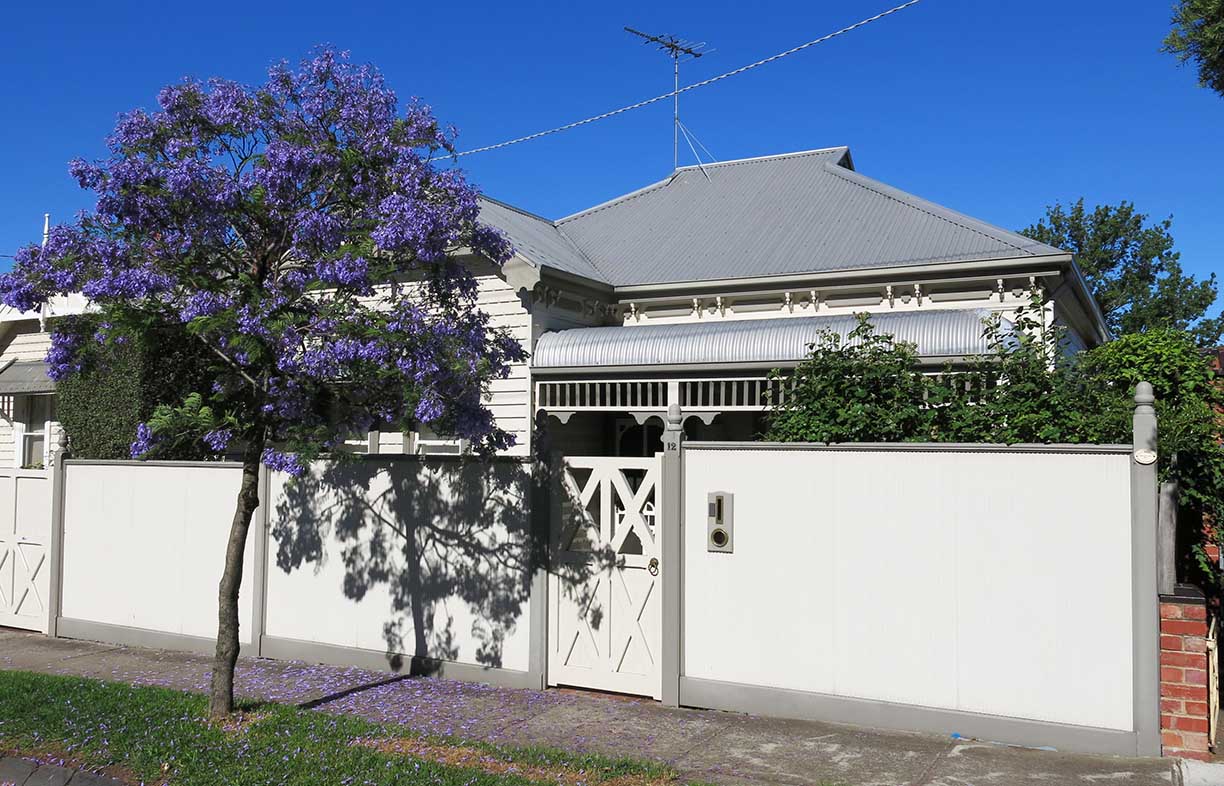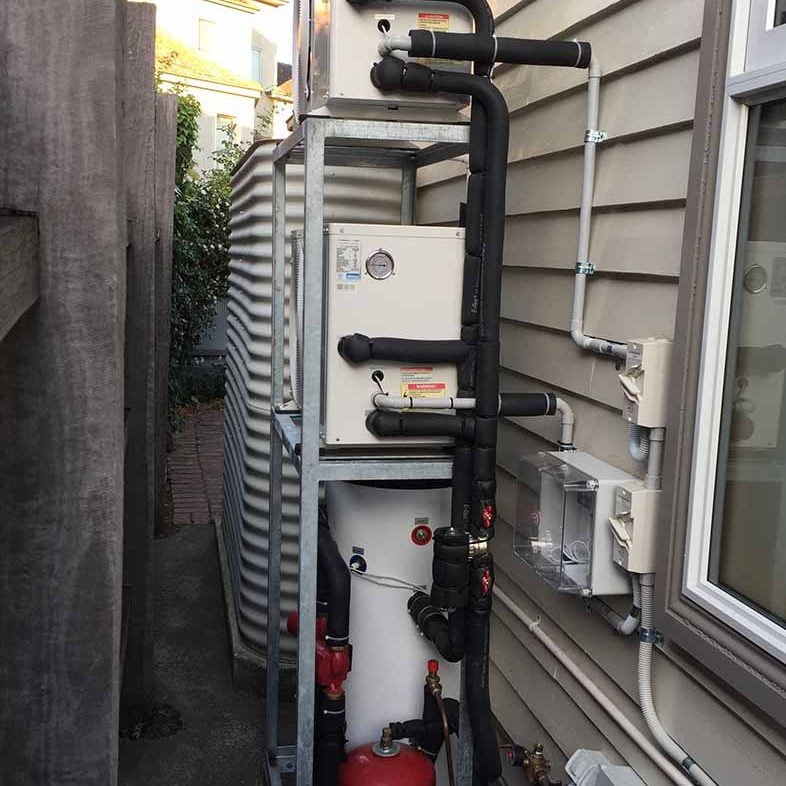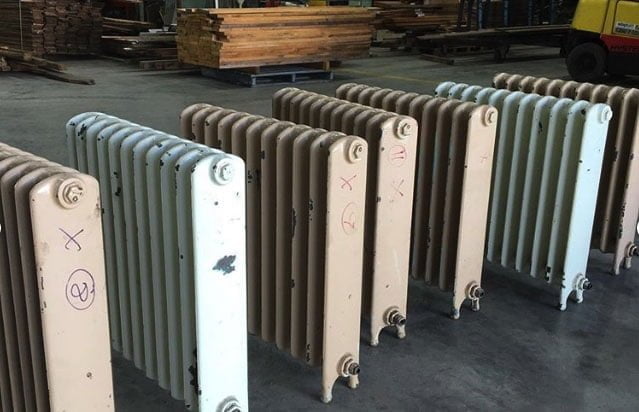Heating case study: converting gas to heat pump hydronic

This 1908 weatherboard Edwardian in Melbourne has been renovated, extended and insulated — and is making the switch to all-electric, powered by solar PV and 100% GreenPower.
In a project completed in November 2017, the owners replaced the gas boiler on their existing hydronic heating system with an electric heat pump, while retaining the original 25-year-old radiators.
Owner Peter Hormann says they did a lot of work to check whether a heat pump system would enable the 25-year-old radiators to deliver sufficient heat for their winter heating requirements. An important consideration is the lower operating temperatures of a heat pump system which is most efficient up to 55 °C (though can run up to 60 °C or 65 °C) compared to 70 °C from a gas hydronic boiler.
While working out their upgrade options, they limited their old gas boiler to 55 °C through two Melbourne winters to test the existing radiator effectiveness at lower system operating temperatures. “We found that with the lower radiator temperatures the room heating was more gradual and took an extra 30 minutes to bring the house up from a 17 °C standby temperature to our 21 °C ‘comfort’ temperature,” says Peter. To compensate, their household thermostat was programmed for an earlier start in the morning and late afternoon heating periods.

Chris Siddons from Siddons Solar Hydronics (who installed the new system) says that there are some advantages to having a lower water temperature in a hydronic system: “The plumbing fittings have a longer life at lower temperatures, and the radiators are a safer temperature for toddlers and babies.”
Another approach used with heat pumps is to use larger radiators, but Peter was keen to use the existing radiators, which, despite their age, were in good condition.
They replaced the 37.8 kW gas boiler with two Siddons Solarstream 6 kW heat pumps (with a shared 100 L buffer tank), split the household radiator circuit into two zones and insulated the existing below-floor copper pipes. The new heat pumps cost $10,000, plus $1500 for the insulation, $4400 for additional plumbing and $3500 to upgrade their under-sized switchboard (essential for this and other electric appliance upgrades).
Now, the house has radiators split across two zones, each with its own thermostat: the front zone has a radiator in each of the three bedrooms, bathroom, hallway and study, and the rear zone comprises five radiators in the open-plan kitchen, living and dining area. A new wireless thermostat for the front zone means they can move that thermostat; for example, to a bedroom at night, then the study during the day. Like any hydronic system, individual radiator taps can be turned on or off.
The heat pumps also have scheduled ‘off’ times: one heat pump (55 °C max) is always off from 10 am to 4 pm, and the other (53 °C max) is always off from 11 pm to 6.30 am. Having just one heat pump operating during the day (at about 1.7 kW) increases the likelihood of the heating being powered by onsite solar PV. The morning and evening ‘standby to comfort temperature’ boost periods are covered by both heat pumps. Once a zone is at the comfort temperature, they have found one heat pump is able to maintain the zone temperature within ±0.2 °C. By setting different heat pump maximum temperatures, only one will operate if the buffer tank temperature stays within the 50 °C to 55 °C control range, but both will operate if the buffer tank temperature drops below 50 °C.
In June, daily energy drawn from the grid for heating has been up to 20 kWh on weekdays and up to 30 kWh on weekends, plus some input from solar PV.
This article was first published in Issue 144 (July-Sept 2018) of Renew magazine. Issue 144 has smart home technology and smart electric heating as its focus.
Related articles
 Efficient homes
Efficient homes
Building for a changing climate
Are we building homes for the future, or for the past? Rob McLeod investigates how climate change is impacting home energy ratings and the way we build our homes.
Read more Reuse & recycling
Reuse & recycling
Recycled hydronic heat
Renew’s sustainability researcher Rachel Goldlust gives us a view of and from the Salvage Yard.
Read more Efficient homes
Efficient homes
Gas and our health
Dr Ben Ewald uncovers the health effects of gas in the home.
Read more
